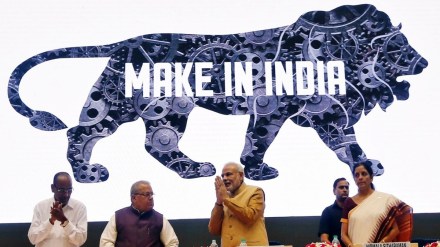By Arjun Malhotra
India now proudly stands as a beacon in digital public infrastructure (DPI), with nations looking to emulate our advancements in creating seamless, paperless, and cashless protocols. This fusion of physical and digital, or ‘phygital’ infrastructure, coupled with our vast demographics and growing demand, is expected to give India a 5-6% growth rate at a time when the global economy is pegged at around 3-4%.
However, to avoid remaining a back office for the US or China, we need to kickstart a new type of growth that is powered by indigenisation, is more sustainable and creates high-income jobs for the people of the country. This will happen when we see more Made in India products.
It’s important that our products are localised, with little or no reliance on foreign components. At every step of the journey, we also need to innovate. In the 1970s, for example, when we had no UPS systems and were plagued by frequent power cuts, at HCL we designed Power Shutoff Auto Restart (PSAR) systems, to enable seamless workflows.
Similarly, to tweak our products to address our unique challenges, we need to deepen our R&D and think more about hardware innovations. This is important because we need to make products tailored to our needs, meeting specific functionality criteria, safety requirements and price points. By designing ‘Make in India’ low-cost products, we will be able to address the mismatch in digital accessibility.
The India consumer electronics market size was valued at $73.73 billion in 2022 and is expected to grow at a compound annual growth rate (CAGR) of 6.8% from 2023 to 2030. Therefore, India needs to rapidly transform into a manufacturing hub for new-generation electronics products with minimal dependence on foreign components.
When we have more Made in India products, they will be repairable locally. A circular economy focussed on repair will help to plot India’s climate burden fight, minimise raw material extraction, result in reduced waste in landfills, and open avenues for more jobs.
Designing and manufacturing in India will also safeguard us from external threats, such as covert spyware embedded within electronic hardware. Hidden vulnerabilities in cheap foreign products may lead to cyber-attacks, jeopardising our government institutions, banking systems, defence systems, energy sectors, and even our space programmes. Hardware vulnerabilities pose even greater risks than software. Thus, the local is also safe.
Think of the huge data that can be generated by digitising records of ASHA (accredited social health activist) workers. There is one ASHA worker for every 1000-2500 population. Digital accessibility of ASHA workers, with cheap quality tablets, for instance, will significantly transform healthcare delivery. Similarly, we can cover huge ground in education and employment by ensuring our products are not expensive. Make In India products thus fire all cylinders in one go — development, inclusivity, growth and safety.
(The writer is co-chair, Epic Foundation, & co-founder, HCL)
